Secure Checkout. FREE SHIPPING for Continental U.S. Orders over $60.
Menu
-
- Home
-
About Us
-
The Approach
-
Linking Language & Literacy
-
MindWing Learning
-
Learning Resources
-
SHOP
-
Blog
-
- About MindWing
- Our People
- Contact Us
- Your Account
- Login
-
United States (USD $)

Secure Checkout. FREE SHIPPING for Continental U.S. Orders over $60.

Analyze 5th Grade Writing
May 24, 2016
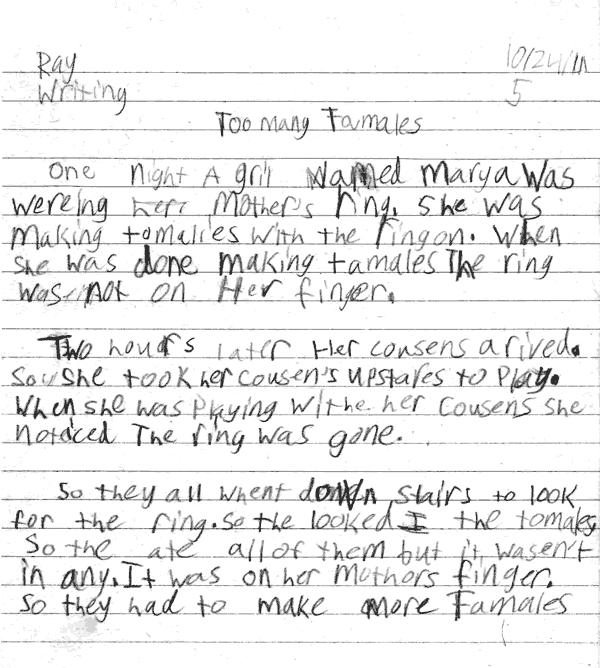 Recent blogs showed Maryellen’s analysis of a third-grade written retelling of Too Many Tamales. Included in those blogs is a copy of the actual sample, a typed version of the sample, an analysis, and conferencing suggestions to use during the Writing Process. In this new blog, we look at another sample of a written retelling of Too Many Tamales; this time from a fifth-grade student, Ray. We invite you to analyze his writing and at the end of this week, Maryellen will provide her analysis and talking points for conferencing.
Recent blogs showed Maryellen’s analysis of a third-grade written retelling of Too Many Tamales. Included in those blogs is a copy of the actual sample, a typed version of the sample, an analysis, and conferencing suggestions to use during the Writing Process. In this new blog, we look at another sample of a written retelling of Too Many Tamales; this time from a fifth-grade student, Ray. We invite you to analyze his writing and at the end of this week, Maryellen will provide her analysis and talking points for conferencing.

Magnetic Spinner Activity for Narrative & Expository Text Questions
May 20, 2016
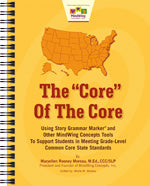 In today’s classrooms, students are being asked to comprehend more complex materials in earlier grades with a particular emphasis on expository texts. The blending of both narrative and expository texts in many reading selections make understanding these structures a cornerstone for student comprehension success. The iconic structure of the SGM® provides a concrete visual and tactile scaffold to teach these structures to children. The expository text structures “tie in” to the narrative sequence. The “Core” of the Core manual explains this connection in detail showing how each narrative stage facilitates thinking about information (expository) structures.
In today’s classrooms, students are being asked to comprehend more complex materials in earlier grades with a particular emphasis on expository texts. The blending of both narrative and expository texts in many reading selections make understanding these structures a cornerstone for student comprehension success. The iconic structure of the SGM® provides a concrete visual and tactile scaffold to teach these structures to children. The expository text structures “tie in” to the narrative sequence. The “Core” of the Core manual explains this connection in detail showing how each narrative stage facilitates thinking about information (expository) structures.

Tech Tuesday: Chapter Books and Stickwriting, a Complementary Visual Strategy
May 17, 2016
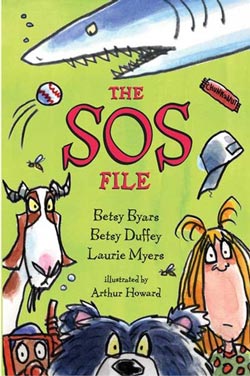 Using chapter books, which provide richer and yet more difficult narratives older students must tackle, has been a focus of the MindWing Blog this school year. In several of my posts, I have discussed tech-related avenues to getting the context of chapter books your students may be reading in class (to serve as topics for narrative intervention activities with SGM®), as well as apps that can visually represent the Critical Thinking Triangle®, a great support to review the narrative gist of chapters within a book. In this post, we are going to take a look at a great chapter book to use along with SGM®, The SOS File by Betsy Byars, Betsy Duffy, and Laurie Myers, along with a strategy that aligns with narrative intervention, Stickwriting, or representing narrative elements through quick sketches...
Using chapter books, which provide richer and yet more difficult narratives older students must tackle, has been a focus of the MindWing Blog this school year. In several of my posts, I have discussed tech-related avenues to getting the context of chapter books your students may be reading in class (to serve as topics for narrative intervention activities with SGM®), as well as apps that can visually represent the Critical Thinking Triangle®, a great support to review the narrative gist of chapters within a book. In this post, we are going to take a look at a great chapter book to use along with SGM®, The SOS File by Betsy Byars, Betsy Duffy, and Laurie Myers, along with a strategy that aligns with narrative intervention, Stickwriting, or representing narrative elements through quick sketches...

Maryellen’s Analysis of Emma’s Sample
May 13, 2016
 The following is an analysis of Emma’s written expression of Too Many Tamales. (See previous blog, Analyze A Narrative Written Sample.) Emma’s third grade teacher considered her to be among the top writers in the class and we agree! We’ve included a typed version of her writing, an analysis and a conference suggestion for use during the Writing Process. In our conferencing points, we included mapping using samples of the Story Grammar Marker® iconic maps. If you are not familiar with our Data Collection tools, we have a wide variety to accommodate student needs and your intervention goals. There are also student tools that will assist students in assessing their own work. Below is a sampling of how I would approach conferencing with Emma...
The following is an analysis of Emma’s written expression of Too Many Tamales. (See previous blog, Analyze A Narrative Written Sample.) Emma’s third grade teacher considered her to be among the top writers in the class and we agree! We’ve included a typed version of her writing, an analysis and a conference suggestion for use during the Writing Process. In our conferencing points, we included mapping using samples of the Story Grammar Marker® iconic maps. If you are not familiar with our Data Collection tools, we have a wide variety to accommodate student needs and your intervention goals. There are also student tools that will assist students in assessing their own work. Below is a sampling of how I would approach conferencing with Emma...

Analyze A Narrative Writing Sample
May 10, 2016
 In a recent blog for Cinco de Mayo, we posted the analysis of the book, Too Many Tamales. (Previous blog.)
In a recent blog for Cinco de Mayo, we posted the analysis of the book, Too Many Tamales. (Previous blog.)
Too Many Tamales is quite complex in terms of its content. The reader needs to be attentive to the illustrations as well as the text itself. Complexity of a text poses challenges to students and instructors alike. There are several measures of complexity of text. They are: Lexile Measures, Qualitative Complexity and Knowledge of the competence of the student as reader/listener in order to match him/her to text and task. (Please see references below for further study.) As instructors and interventionists, we are constantly attentive to these measures...

Collaboration in the Classroom with Story Grammar Marker® & Big Al
May 06, 2016
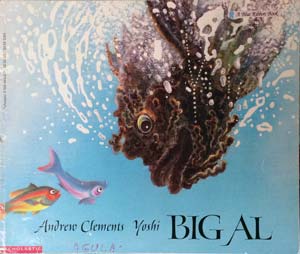
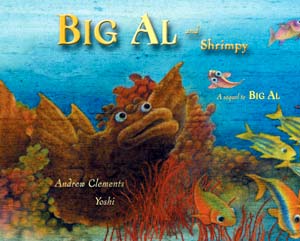 Big Al, written by Andrew Clements and illustrated by Yoshi, was always one of my key books when working collaboratively with teachers as we implemented the SGM in classroom settings. There was so much to do with this picture book including mapping the story out as a Complete Episode using the SGM® map, retelling the story with partners, doing a written retelling using the completed map, working on character description using the SGM® Character Map, sequencing of events in the story, and using sequence words for story cohesion. Students and teachers alike were delighted to learn that Clements and Yoshi had teamed up in 2002 for another book featuring Big Al…Big Al and Shrimpy. Both stories begin with the same wording which created a natural segue to compare/contrast activities...
Big Al, written by Andrew Clements and illustrated by Yoshi, was always one of my key books when working collaboratively with teachers as we implemented the SGM in classroom settings. There was so much to do with this picture book including mapping the story out as a Complete Episode using the SGM® map, retelling the story with partners, doing a written retelling using the completed map, working on character description using the SGM® Character Map, sequencing of events in the story, and using sequence words for story cohesion. Students and teachers alike were delighted to learn that Clements and Yoshi had teamed up in 2002 for another book featuring Big Al…Big Al and Shrimpy. Both stories begin with the same wording which created a natural segue to compare/contrast activities...
